Challenges and Typical Model Purposes
Customers request Cost Transparency Models for In-House Services (Corporate Functions) to understand the costs and to be able to make more fair/ accurate internal charges to other functions, offices or subsidiaries. These model are often referred to as Charge-Back Models and the most common areas to make charge back models for are IT functions and Shared Service Center.
Corporate (and local) IT is often an area of high expenses and increasing expenses regardless how much a company tries to economize. When IT is charged to other functions, it often raises big discussions because it is a black box for many and often even for the Head of IT. Users believe they should only pay for a service they use. The biggest challenge within IT is to let people understand that for several of the IT expenses you do not just pay for usage but also for the possibility, where help desk is a classic example. Even if the help desk has nothing to do, they still require a salary and a desk. Alternative is to outsource and before doing that, you need to know what you internal expenses are and number of cases, else you cannot make a correct strategic decision. Should users only pay for the service usage, while they at the same time complain if there is no more data space and you always have to have a safety capacity. A Cost Transparency model can help creating a deeper understanding of the IT expenses and it created a common IT language. One methodology within IT costing is Technology Business Management (TBM), which is still an Activity Based Cost way of thinking, it just uses standard terminologies. Understanding you costs per application, the infrastructure and all user related services do not just make internal allocations more fair, it also gives you a possibility to make strategic decisions. With a Cost Transparency IT model, you can for instance analyze application expenses and see maintenance vs. development and internal vs. external consultants. You will also have the possibility to do license optimization and you can cross analyze your model data. Getting the full insight and doing cross analyses of applications will put you in a whole new position when you have to do the budget and when you are challenged to reduce IT expenses.
Case example
After the implementation of a product costing model for ONE OF NORTH EUROPE’S LARGEST BANKS AND INSURANCE COMPANIES, we were asked to make an Innovative Cost Transparency Model for their Corporate IT, a yearly budget of nearly € 85 million, as it was a black box to them. They was not sure what the actual spend was, it was hard to make a budget, there was no break down of the cost spend, there was IT investments outside the IT department and it was unknown how much of the expenses was maintenance or development because some were handled as projects and others was not. In total they had about 800 applications, 17,000 employees in 16 countries.
We helped them get an understanding of the current situation, where actual data per month was structured and matched with budget. We identified all applications and developed an infrastructure logic so all IT expenses could be connected and divided to all offices in a fair way. The ERP systems was changed so all invoices was registered in a dimensional way so expenses could be seen per application group, per cost type and per unit. Maintenance, development and projects was all separated and could be analyzed at any time actual vs. budget. Now they know what it costs per office, application etc. and offices know what it cost to employ one new person, whether it is an insurance-, a bank assistant or an administration person.

